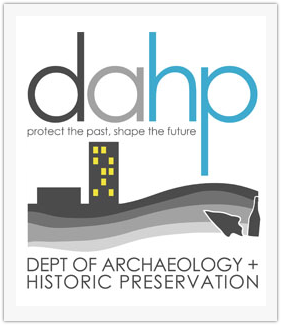New Certified Local Governments
Apr 17, 2015
Please welcome the City of Pasco and the City of Millwood to the growing community of CLG's in Washington! Millwood has its roots in the company town that developed when the site along the south bank of the Spokane River was selected as the home for the region's first paper mill. The mill's first employees were, for the most part, men who relocated with their families from the Midwest. The town's wealth of early twentieth-century architecture has its roots in the homes constructed for these employees, and still stand within earshot of the mill whistle, which sounds each workday at 7:00 am, noon, 12:45 pm, and 3:45 pm. In early 1928 the Town of Millwood gained distinction as the first incorporated town in the Spokane Valley. Mr. W.A. Brazeau, president of the paper mill, served as Millwood's first mayor. As the town has grown over the years, residents and government have worked together to support existing and developing businesses, while also taking pride in Millwood's diverse neighborhoods, unique historic character, and small-town atmosphere. Pasco Like today, a mild climate and an abundant fish supply ensured that inhabitants thrived along the banks of the Columbia, Yakima, and Snake rivers. Evidence of the earliest known inhabitants in the Western Hemisphere were found in northern Franklin County at the Marmes Rockshelter, near Lyons Ferry and Palouse Falls. In 1805, the Lewis and Clark Expedition camped at the confluence of the Columbia and Snake rivers in an area that 200 years later is called Sacagawea State Park in honor of their Native American guide. Little did they know the surrounding area would be called Pasco, today a bustling, thriving community of 67,770 people. The Northern Pacific Railroad brought a rush of settlers to the Washington Territory, leading to statehood in 1889. The railroad town of Ainsworth was moved to Pasco in 1886 and brought with it the Franklin County seat. Pasco was incorporated on September 3, 1891, and was named by Virgil Bogue, an engineer for the railroad, after Cerro de Pasco in Peru. Pasco grew to be a small but important railroad town in the years before World War II. The war brought the Manhattan Project, the United States' development of the atomic bomb, to the nearby Hanford Site. Pasco, along with the rest of the area, played an vital support role in that effort. Pasco was also home to Naval Air Station Pasco (the current Tri-Cities Airport) and the Pasco Engineer Depot (still called "Big Pasco" today). These wartime activities more than doubled the population in just months. Post-war, Hanford played an important role in the area economy, and it continues through today in the cleanup effort. Additionally, the build out of irrigation, such as the Columbia Basin Project, made agriculture an even more critical part of the economy of Pasco and Franklin County.




